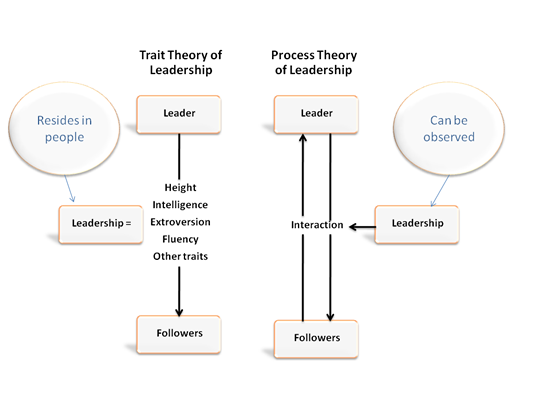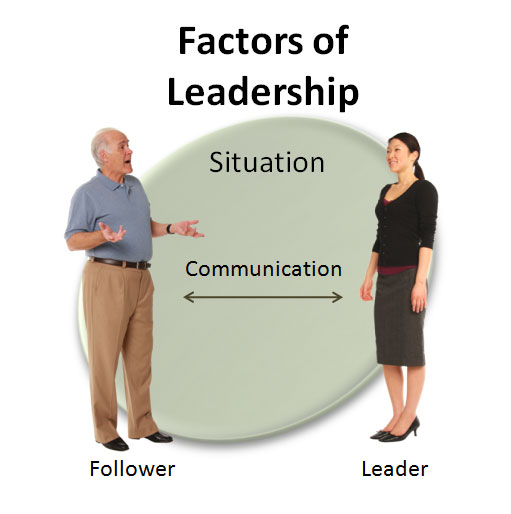Monday 16 April 2012
LEADERSHIP INSIGHTS: Principles of LeadershipTo help you be, know, and ...
LEADERSHIP INSIGHTS: Principles of LeadershipTo help you be, know, and ...: Principles of Leadership To help you be, know, and do, follow these eleven principles of leadership. The later chapters in this series e...
Principles of Leadership
To help you be, know, and do, follow these eleven principles of leadership. The later chapters in this series expand on these principles and provide tools for implementing them:- Know yourself and seek self-improvement - In order to know yourself, you have to understand your be, know, and do, attributes. Seeking self-improvement means continually strengthening your attributes. This can be accomplished through self-study, formal classes, reflection, and interacting with others.
- Be technically proficient - As a leader, you must know your job and have a solid familiarity with your employees' tasks.
- Seek responsibility and take responsibility for your actions - Search for ways to guide your organization to new heights. And when things go wrong, they always do sooner or later — do not blame others. Analyze the situation, take corrective action, and move on to the next challenge.
- Make sound and timely decisions - Use good problem solving, decision making, and planning tools.
- Set the example - Be a good role model for your employees. They must not only hear what they are expected to do, but also see. We must become the change we want to see - Mahatma Gandhi
- Know your people and look out for their well-being - Know human nature and the importance of sincerely caring for your workers.
- Keep your workers informed - Know how to communicate with not only them, but also seniors and other key people.
- Develop a sense of responsibility in your workers - Help to develop good character traits that will help them carry out their professional responsibilities.
- Ensure that tasks are understood, supervised, and accomplished - Communication is the key to this responsibility.
- Train as a team - Although many so called leaders call their organization, department, section, etc. a team; they are not really teams...they are just a group of people doing their jobs.
- Use the full capabilities of your organization - By developing a team spirit, you will be able to employ your organization, department, section, etc. to its fullest capabilities.
- Don't Work For Money - By building a subconscious mind of not working for money you stand out in your organization because you are purpose driven and not money driven. Next time, we will look into THE ATTRIBUTES OF LEADERSHIP.
Tuesday 13 March 2012
LEADERSHIP SERIES
HERE, WE WILL LOOK AT WHO A LEADER IS:
To inspire your workers into higher levels of teamwork, there are certain things you must be, know, and, do. These do not come naturally, but are acquired through continual work and study. Good leaders are continually working and studying to improve their leadership skills; they are NOT resting on their laurels.
Leaders carry out this process by applying their leadership knowledge and skills. This is called Process Leadership (Jago, 1982). However, we know that we have traits that can influence our actions. This is called Trait Leadership (Jago, 1982), in that it was once common to believe that leaders were born rather than made. These two leadership types are shown in the chart below (Northouse, 2007, p5):
 While leadership is learned, the skills and knowledge processed by
the leader can be influenced by his or hers attributes or traits, such
as beliefs, values,
ethics, and character. Knowledge and skills contribute directly to the process of leadership, while the other attributes give the leader certain characteristics that make him or her unique.
While leadership is learned, the skills and knowledge processed by
the leader can be influenced by his or hers attributes or traits, such
as beliefs, values,
ethics, and character. Knowledge and skills contribute directly to the process of leadership, while the other attributes give the leader certain characteristics that make him or her unique.
Skills, knowledge, and attributes make the Leader, which is one of the:

Also note that the situation normally has a greater effect on a leader's action than his or her traits. This is because while traits may have an impressive stability over a period of time, they have little consistency across situations (Mischel, 1968). This is why a number of leadership scholars think the Process Theory of Leadership is a more accurate than the Trait Theory of Leadership.
Various forces will affect these four factors. Examples of forces are your relationship with your seniors, the skill of your followers, the informal leaders within your organization, and how your organization is organized.

When a person is deciding if she respects you as a leader, she does not think about your attributes, rather, she observes what you do so that she can know who you really are. She uses this observation to tell if you are an honorable and trusted leader or a self-serving person who misuses authority to look good and get promoted. Self-serving leaders are not as effective because their employees only obey them, not follow them. They succeed in many areas because they present a good image to their seniors at the expense of their workers.
LETS STOP HERE, NEXT NNACHI ORJI CHINONSO WILL TAKE YOU INTO THE PRICIPLES OF LEADERSHIP REMAIN BLESSED.
Concepts of Leadership
I used to think that running an organization was equivalent to conducting a symphony orchestra. But I don't think that's quite it; it's more like jazz. There is more improvisation. — Warren BennisGood leaders are made not born. If you have the desire and willpower, you can become an effective leader. Good leaders develop through a never ending process of self-study, education, training, and experience (Jago, 1982). This guide will help you through that process.
To inspire your workers into higher levels of teamwork, there are certain things you must be, know, and, do. These do not come naturally, but are acquired through continual work and study. Good leaders are continually working and studying to improve their leadership skills; they are NOT resting on their laurels.
Definition of Leadership
The meaning of a message is the change which it produces in the image. — Kenneth Boulding in The Image: Knowledge in Life and Society
Before we get started, lets define leadership. Leadership is a process by which a person influences others to accomplish an objective and directs the organization in a way that makes it more cohesive and coherent. This definition is similar to Northouse's (2007, p3) definition — Leadership is a process whereby an individual influences a group of individuals to achieve a common goal.Leaders carry out this process by applying their leadership knowledge and skills. This is called Process Leadership (Jago, 1982). However, we know that we have traits that can influence our actions. This is called Trait Leadership (Jago, 1982), in that it was once common to believe that leaders were born rather than made. These two leadership types are shown in the chart below (Northouse, 2007, p5):

Skills, knowledge, and attributes make the Leader, which is one of the:
Four Factors of Leadership
There are four major factors in leadership (U.S. Army, 1983):
Leader
You must have an honest understanding of who you are, what you know, and what you can do. Also, note that it is the followers, not the leader or someone else who determines if the leader is successful. If they do not trust or lack confidence in their leader, then they will be uninspired. To be successful you have to convince your followers, not yourself or your superiors, that you are worthy of being followed.Followers
Different people require different styles of leadership. For example, a new hire requires more supervision than an experienced employee. A person who lacks motivation requires a different approach than one with a high degree of motivation. You must know your people! The fundamental starting point is having a good understanding of human nature, such as needs, emotions, and motivation. You must come to know your employees' be, know, and do attributes.Communication
You lead through two-way communication. Much of it is nonverbal. For instance, when you “set the example,” that communicates to your people that you would not ask them to perform anything that you would not be willing to do. What and how you communicate either builds or harms the relationship between you and your employees.Situation
All situations are different. What you do in one situation will not always work in another. You must use your judgment to decide the best course of action and the leadership style needed for each situation. For example, you may need to confront an employee for inappropriate behavior, but if the confrontation is too late or too early, too harsh or too weak, then the results may prove ineffective.Also note that the situation normally has a greater effect on a leader's action than his or her traits. This is because while traits may have an impressive stability over a period of time, they have little consistency across situations (Mischel, 1968). This is why a number of leadership scholars think the Process Theory of Leadership is a more accurate than the Trait Theory of Leadership.
Various forces will affect these four factors. Examples of forces are your relationship with your seniors, the skill of your followers, the informal leaders within your organization, and how your organization is organized.
Boss or Leader?
Although your position as a manager, supervisor, lead, etc. gives you the authority to accomplish certain tasks and objectives in the organization (called Assigned Leadership), this power does not make you a leader, it simply makes you the boss (Rowe, 2007). Leadership differs in that it makes the followers want to achieve high goals (called Emergent Leadership), rather than simply bossing people around (Rowe, 2007). Thus you get Assigned Leadership by your position and you display Emergent Leadership by influencing people to do great things.
Bass' Theory of Leadership
Bass' theory of leadership states that there are three basic ways to explain how people become leaders (Stogdill, 1989; Bass, 1990). The first two explain the leadership development for a small number of people. These theories are:- Some personality traits may lead people naturally into leadership roles. This is the Trait Theory.
- A crisis or important event may cause a person to rise to the occasion, which brings out extraordinary leadership qualities in an ordinary person. This is the Great Events Theory.
- People can choose to become leaders. People can learn leadership skills. This is the Transformational or Process Leadership Theory. It is the most widely accepted theory today and the premise on which this guide is based.
Total Leadership
What makes a person want to follow a leader? People want to be guided by those they respect and who have a clear sense of direction. To gain respect, they must be ethical. A sense of direction is achieved by conveying a strong vision of the future.When a person is deciding if she respects you as a leader, she does not think about your attributes, rather, she observes what you do so that she can know who you really are. She uses this observation to tell if you are an honorable and trusted leader or a self-serving person who misuses authority to look good and get promoted. Self-serving leaders are not as effective because their employees only obey them, not follow them. They succeed in many areas because they present a good image to their seniors at the expense of their workers.
Be Know Do
The basis of good leadership is honorable character and selfless service to your organization. In your employees' eyes, your leadership is everything you do that effects the organization's objectives and their well-being. Respected leaders concentrate on (U.S. Army, 1983):- what they are [be] (such as beliefs and character)
- what they know (such as job, tasks, and human nature)
- what they do (such as implementing, motivating, and providing direction).
The Two Most Important Keys to Effective Leadership
According to a study by the Hay Group, a global management consultancy, there are 75 key components of employee satisfaction (Lamb, McKee, 2004). They found that:- Trust and confidence in top leadership was the single most reliable predictor of employee satisfaction in an organization.
- Effective communication by leadership in three critical areas was the key to winning organizational trust and confidence:
- Helping employees understand the company's overall business strategy.
- Helping employees understand how they contribute to achieving key business objectives.
- Sharing information with employees on both how the company is doing and how an employee's own division is doing — relative to strategic business objectives.
LETS STOP HERE, NEXT NNACHI ORJI CHINONSO WILL TAKE YOU INTO THE PRICIPLES OF LEADERSHIP REMAIN BLESSED.
Thursday 8 March 2012
LEADERSHIP SELF CONFIDENCE
I rarely encounter this issue in my work with CEOs and potential CEOs because people at the top of huge organizations don't often have self-confidence problems. But I have had several inquiries lately about helping future leaders who need to demonstrate more self-confidence.
Let me give you a few suggestions that I give leaders who have self-confidence issues (then I'll ask our readers to pitch in with more suggestions):
1. Decide if you really want to be a leader. Many of the MBAs who report self-confidence issues are brilliant technicians. They often find the uncertainty and ambiguity of leading people very unsettling. They are looking for the "right answers" - similar to the ones in engineering school. In some cases, brilliant technical experts should continue to be brilliant technical experts - and not feel obligated to become managers.
2. Make peace with ambiguity in decision making. There are usually no clear right answers when making complex business decisions. Even CEOs are guessing.
3. Gather a reasonable amount of data, involve people, then follow your gut and do what you think is right.
4. Accept the fact that you are going to fail on occasion. All humans do
5. Have fun! Life is short. Why should you expect your direct reports to demonstrate positive enthusiasm, if they don't see it in you?
6. Once you make a decision, commit and go for it. Don't continually second guess yourself. If you have to change course, you have to change course. If you never commit, all you will ever do is change course.
7. Demonstrate courage on the outside, even when you don't feel it on the inside. We are all afraid on occasion -- that is just part of being human. If you are going to lead people in tough times, you will need to show more courage than fear. When direct reports read worry and concern on the face of a leader, they begin to lose confidence in the leader's ability to lead.
Readers - Many of you have more experience in dealing with self-confidence issues than I do. Any of your suggestions for answering this question are appreciated.
Let me give you a few suggestions that I give leaders who have self-confidence issues (then I'll ask our readers to pitch in with more suggestions):
1. Decide if you really want to be a leader. Many of the MBAs who report self-confidence issues are brilliant technicians. They often find the uncertainty and ambiguity of leading people very unsettling. They are looking for the "right answers" - similar to the ones in engineering school. In some cases, brilliant technical experts should continue to be brilliant technical experts - and not feel obligated to become managers.
2. Make peace with ambiguity in decision making. There are usually no clear right answers when making complex business decisions. Even CEOs are guessing.
3. Gather a reasonable amount of data, involve people, then follow your gut and do what you think is right.
4. Accept the fact that you are going to fail on occasion. All humans do
5. Have fun! Life is short. Why should you expect your direct reports to demonstrate positive enthusiasm, if they don't see it in you?
6. Once you make a decision, commit and go for it. Don't continually second guess yourself. If you have to change course, you have to change course. If you never commit, all you will ever do is change course.
7. Demonstrate courage on the outside, even when you don't feel it on the inside. We are all afraid on occasion -- that is just part of being human. If you are going to lead people in tough times, you will need to show more courage than fear. When direct reports read worry and concern on the face of a leader, they begin to lose confidence in the leader's ability to lead.
Readers - Many of you have more experience in dealing with self-confidence issues than I do. Any of your suggestions for answering this question are appreciated.
Monday 5 March 2012
LEADERSHIP INSIGHTS: KEY AREAS OF CONCENTERATION
LEADERSHIP INSIGHTS: KEY AREAS OF CONCENTERATION: A respected leader concentrates on three key areas: 1. “ Be ” - what he/she is, i.e. beliefs and values 2. “ Know ” - what he/she know...
Thursday 1 March 2012
KEY AREAS OF CONCENTERATION
A respected leader concentrates on three key areas:
1. “Be” - what he/she is, i.e. beliefs and values
2. “Know” - what he/she knows, i.e. job, tasks, human nature
3. “Do” - what he/she does, i.e. implement, motivate, and provide direction
What makes a person want to follow a leader? People want to be guided by people they respect and who have a clear sense of direction. To gain respect, they must be ethical. A sense of direction is achieved by conveying a strong vision of the future.
1. “Be” - what he/she is, i.e. beliefs and values
2. “Know” - what he/she knows, i.e. job, tasks, human nature
3. “Do” - what he/she does, i.e. implement, motivate, and provide direction
What makes a person want to follow a leader? People want to be guided by people they respect and who have a clear sense of direction. To gain respect, they must be ethical. A sense of direction is achieved by conveying a strong vision of the future.
Subscribe to:
Posts (Atom)
